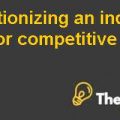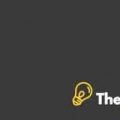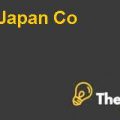
Define
This case analysis basically assesses the influence of a supply chain pilot applied at Hugo Boss. Basically, this pilot involved changing the techniques in which the company orders from its relevant suppliers. Additionally, this explores the experimental of evaluating the influence of supply chain change, the connection between firm’s performance and the overall operational performance, and the link between the important elements like inventory, sales and most significantly product availability.
Moros was quite concerned about the stock outs because he firmly believed that customers might face issues and can immediately shift towards the substitute. As he reviewed the flow and stream of product through their well-established supply chain network, Moros straight away recognized several opportunities for more and more improvement. From all possible solution the most effective ways to modify the frequency with which the entire inventory has been ordered from the concerned contract manufacturers. He questioned, why these orders were on monthly basis and moreover ordering more often afford better flexibility. The basic concern was to improve the changes, needed to be made for the improvement of the overall supply chain process.
Measure
- Recent financial and operational statistics from pilot project
- Pilot’s financial impact
- Either this new initiative would be taken towards other products.
Analyze
Mr. Constantine Moros, working as the head of operations and procurement for the entire division and Mr. Katja Ruth, working as the division's director were sitting and evaluating the up-to-date financial and operational statistics of Hugo Boss, which had been stemmed from the application of Supply chain optimization pilot in its hosiery Division and global body wear. Both of these were completely agreed upon the accomplishment of the plan and its consequences in terms of lesser inventory to sales ratios and improved product availability for the overall stock keeping units (SKUs) present in it. It had categorized most of its hosiery and body-wear products as they have never out of stock (NOS) products to disappoint customers and retailers from replacing for identical products that had been presented by its rivals such as Tommy Hilfiger, Polo Ralph Lauren, Calvin Klein, Armani, Gabbana, Triumph International, Dolce, Lacoste, Bjorn Borg and DKNY. Both of them actually knew that the majority of the retail customers may look for a substitute or delay the buying decision of an unavailable product, or take their entire order somewhere else.
Moros had basically observed the two basic potential explanations or reasons behind the stock out condition in the overall inventory of the company that stock outs frequently happened during the major retail tenure such as in the month of December, and the other reason is the difference in product styles. Most importantly, he had basically calculated a loss of around 1.1% of net sales from the never out of stock (NOS) products of the entire division in the overall revenues for the year 2004. Moros had recognized several prospects for the improvement of the overall supply chain management while studying the current flow of products.
After the analysis of the overall situation in order to develop and proposed the solution for the above mentioned issues Moro’s came up with a Pilot project to Ruth and mentioned that they must make certain changes in ordering a break for never out of stock and stock keeping units from each and every month to every week. Moreover the company had executed the SCO Pilot based project in the 31st week of the year 2005, which simply resulted in the lower in-hand inventory altitudes and had enhanced the product availability for the never out of stock items. Additionally, it had also reduced the entire lead time which is mandatory for the production procedure for the reason that production required around 3-4 days for the material cutting, around ¾ of a month for sewing, and additional 3 to 4 days for the quality inspection and packing of the products. It had even permitted the company’s production managers or planners to make certain adjustments in their predictions on a weekly basis, which would make that the present level of production exactly replicates the practical demand. Moreover, it had also assisted the division in sinking their transportation cost by the massive figure of 9% to 3% per item that was shipped.................
Supply Chain Optimization at Hugo Boss (A) Harvard Case Solution & Analysis
This is just a sample partial case solution. Please place the order on the website to order your own originally done case solution.
We assess the impact of pilot supplies carried by Hugo Boss. The pilot resulted in a change of how Hugo Boss orders from its suppliers. We explore the problem of estimating the impact of changes in the supply chain, the link between operational efficiency and productivity of the firm, and the relationship between sales, inventory and product availability.
To enhance their effectiveness, color cases should be printed in color. "Hide
by Ananth KR, Nicole DeHoratius, Zahra Kanji Source: Harvard Business School 21 pages. Publication Date: April 27, 2009. Prod. #: 609029-PDF-ENG











